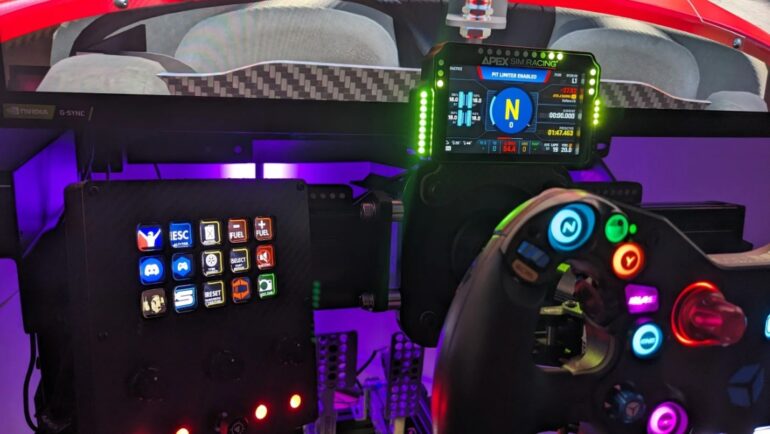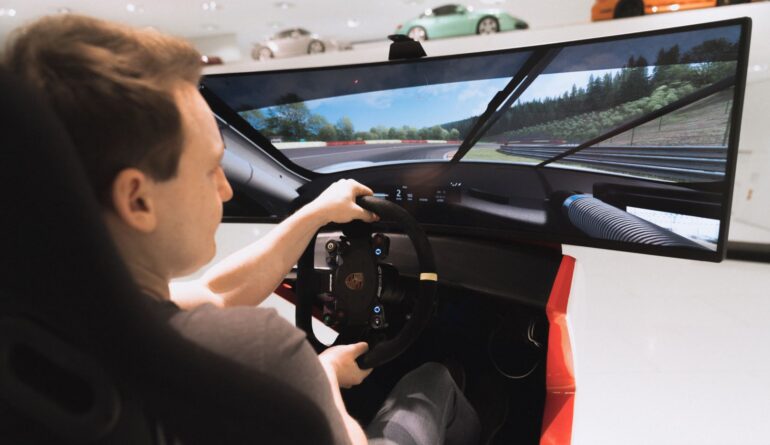
In recent years, sim racing has rapidly evolved from a niche activity into a mainstream phenomenon, capturing the attention of both amateur and professional racers alike. The rise of advanced technology, realistic graphics, and sophisticated physics engines has transformed virtual racing into a compelling experience that mirrors real-world racing conditions.
This progression has led to a surge in popularity among Formula 1 (F1) drivers, who now regularly participate in sim racing during their off-season or downtime. But why has sim racing become such a favored hobby for these elite athletes?
The reasons are multifaceted, ranging from its practicality to its effectiveness as a training tool.
The Appeal of Realistic Training Opportunities
One of the primary reasons F1 drivers are drawn to sim racing is its ability to replicate real-world racing conditions with impressive accuracy. Advanced simulators utilize high-fidelity physics models and detailed telemetry data to create a virtual environment that closely mimics real tracks and car behavior.
This level of realism provides drivers with an opportunity to maintain their skills, sharpen their reflexes, and develop a deeper understanding of track layouts and car dynamics.
Moreover, it offers a controlled environment where drivers can experiment with different setups, strategies, and driving techniques without the risks associated with real-world testing.
For those looking to get better at sim racing, training and practice play a critical role. The immersive experience provided by modern sim racing rigs, complete with force-feedback steering wheels, pedal sets, and realistic seating positions, helps drivers build muscle memory and enhance their driving skills.
Sim racing also offers the advantage of extensive data analysis, allowing drivers to review lap times, braking points, and cornering speeds to make informed adjustments. This analytical approach is similar to the data-driven strategies employed in actual F1 racing, making sim racing a valuable supplementary tool for professional drivers.

A Safe and Cost-Effective Alternative
Real-world motorsport is inherently risky and expensive. The costs of track time, fuel, tires, and potential damage to vehicles add up quickly, making frequent practice sessions impractical for many.
Sim racing provides a cost-effective alternative, allowing F1 drivers to hone their skills without incurring significant expenses or risking physical injury. The ability to race from the comfort of their homes or dedicated simulation facilities means that drivers can practice whenever they want, free from the logistical constraints of real-world racing.
Maintaining a Competitive Edge and Mental Sharpness
For professional athletes, maintaining a competitive edge is crucial. Sim racing helps F1 drivers stay mentally sharp by providing continuous exposure to high-pressure, competitive environments. The strategic elements of sim racing, such as overtaking, defending positions, and managing tire wear and fuel consumption, mirror the challenges faced in real-world F1 races.
Engaging in these virtual competitions helps drivers stay focused and mentally prepared, ensuring that their decision-making skills remain sharp even during the off-season.
The Role of Sim Racing During the COVID-19 Pandemic
The COVID-19 pandemic significantly impacted the world of motorsport, leading to the cancellation or postponement of numerous racing events. During this period, sim racing emerged as a vital alternative for both entertainment and training.
F1 drivers, unable to participate in real-world races, turned to sim racing to stay active and connected with fans. High-profile virtual racing events, such as the F1 Esports Virtual Grand Prix series, featured professional drivers competing alongside sim racing enthusiasts, bridging the gap between real and virtual motorsport.

Social Interaction and Community Building
Beyond the technical and competitive aspects, sim racing also offers a strong sense of community and social interaction. Many F1 drivers enjoy the camaraderie and social connections that sim racing provides.
Online racing platforms and events allow drivers to interact with fans, fellow professionals, and sim racing enthusiasts from around the world. This sense of community is enhanced by the use of voice chat and social media, enabling drivers to share their experiences, discuss racing strategies, and offer insights into their racing careers.
